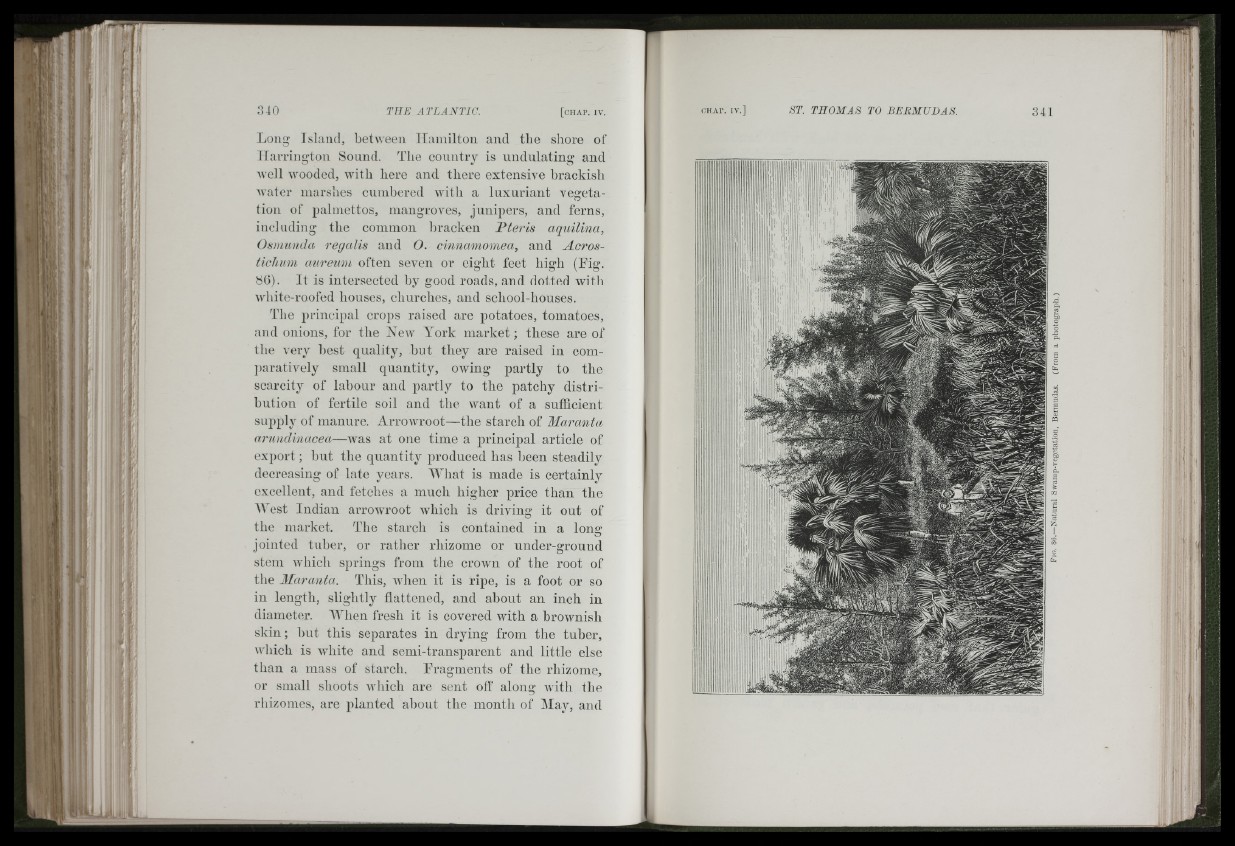
Long Island, between ILainilton and the shore of
Ifarriiigtoii Sound. Tlie couutiy is undulating and
Aveil wooded, with here and there extensive brackish
water marshes cumbered with a luxuriant vegetation
of palmettos, mangroves, junipers, and ferns,
including tbe common liracken Bteris aquilina,
Oismunda regtUis and 0 . cinnamomea, and Acros-
tichum aureiirn often seven or eight feet high (Fig.
80). It is intersected hy good roads, and dotted Avith
Avbite-roofed houses, churches, and school-houses.
Tbe principal crops raised are potatoes, tomatoes,
and onions, for tbe N cav York market; tliese are of
tbe very best quality, but they are raised in com-
jiaratively small quantity, OAving partly to tbe
scarcity of labour and partly to tbe patcby distribution
of fertile soil and tbe want of a sufficient
supply of manure. ArroAvroot—the starch of Maranta
aruudiuucea—Avas at one time a principal article of
export; hut the quantity produced has heen steadily
decreasing of late years. lYliat is made is certainly
excellent, and fetches a much higher price than the
IVest Indian arrowroot Avhich is driving it out of
the market. The starch is contained in a lomrO
jointed tuber, or rather rhizome or under-ground
stem Avhich springs from the crown of the root of
the Maranta. This, Avhen it is ripe, is a foot or so
in length, slightly flattened, and about an inch in
diameter. lYhen fresh it is covered Avith a brownish
skin; hut this separates in drying from the tuber,
Avhich is Avhite and semi-transparent and little else
than a mass of starch. Fragments of the rhizome,
or small shoots Avhich are sent off along Avith tlie
rbizomes, are planted ahout the month of May, and